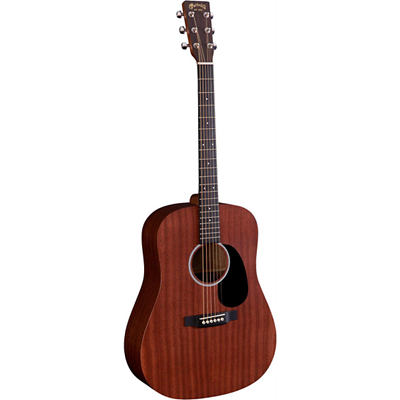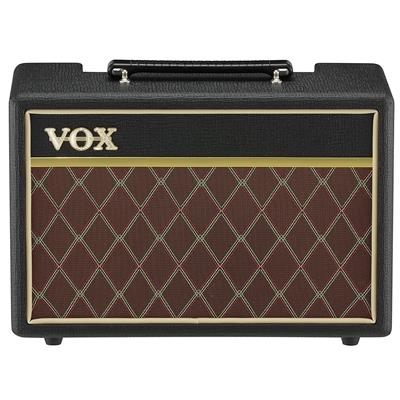 The story goes this way: you get infatuated by an idea of getting a guitar, you marinate the thought for a couple of months – for the fast ones, a couple of weeks – and you finally decide that this is your destiny. You punch in more hours at work, you save up more (a.k.a. live off of instant noodles for a couple of weeks) and finally manage to scrape enough money to buy your first guitar. Now it seems like nothing will stop you from achieving your dream. But oh wait… what about a guitar gig bag or a case? A metronome? You sure as hell cannot forget about some good quality strings. At the end of it, you pretty much end up spending a lot more than you expected. And while this might start an itch and make you growl and say: “Ugh these goddamn sales people just wanna make us buy all this BS just to make more money”, in most cases these accessories are necessary, especially if you have never owned a guitar before. A lot of the time these pretty much necessary things are overlooked and at the end of the day you end up spending more on fixing your guitar. In this post, I want to concentrate on guitar stands. Specifically, I want to help you decide what kind of a stand or hanger you need and best fits your needs. Now, I won’t be recommending anything specific in the post, for that you can check out our “stands” section.
The story goes this way: you get infatuated by an idea of getting a guitar, you marinate the thought for a couple of months – for the fast ones, a couple of weeks – and you finally decide that this is your destiny. You punch in more hours at work, you save up more (a.k.a. live off of instant noodles for a couple of weeks) and finally manage to scrape enough money to buy your first guitar. Now it seems like nothing will stop you from achieving your dream. But oh wait… what about a guitar gig bag or a case? A metronome? You sure as hell cannot forget about some good quality strings. At the end of it, you pretty much end up spending a lot more than you expected. And while this might start an itch and make you growl and say: “Ugh these goddamn sales people just wanna make us buy all this BS just to make more money”, in most cases these accessories are necessary, especially if you have never owned a guitar before. A lot of the time these pretty much necessary things are overlooked and at the end of the day you end up spending more on fixing your guitar. In this post, I want to concentrate on guitar stands. Specifically, I want to help you decide what kind of a stand or hanger you need and best fits your needs. Now, I won’t be recommending anything specific in the post, for that you can check out our “stands” section.
Things To Keep In Mind
The main goal of your stand is to keep your guitar standing (duh) while providing enough stability so that it does not topple over. While this might seem like an easy task, there are a lot of details you need to consider. For instance, you need to know the finish of your guitar, stability and a lot more. I will briefly touch on most of the major things that some beginners might overlook:
Material/Finish
Most popular materials for stands are steel, plastic, and wood. While steel and wood are durable, plastic is pretty short-lived but inexpensive option for stand material. The durability of the material is important but it is not as important as the effect of the material on the guitar finish. The biggest concern of yours when choosing a stand is the finish of the guitar and how much of the surface of your guitar touches the stand and not the padding. Plastic and steel are not the best materials to come in contact with your guitar especially if the finish on your guitar is nitrocellulose. Steel/plastic and nitrocellulose do not go together very well… By that I mean the finish just goes off. Make sure what the finish of your instrument is and if it is nitro than either get a wooden stand or the one that is labeled as “nitro safe”.
Padding – make sure that the stand has sufficient amount of padding. No matter how finish-friendly the stand material is, if you do not have your instrument on a soft, padded surface it will be damaged.
Size – While there are different types of stands that I will be talking about, they vary according to the weight they can support and the size that can hold. Before you buy the stand make sure that it fits the dimensions of your instrument. You need to check whether the neck support will actually fit the neck on your guitar. And don’t forget, if you are getting a wall hanger make sure that the opening for the headstock is not bigger than the actual headstock…
Stability or low center of gravity – You need to make sure that the stand is not unstable and can actually keep the instrument in place even if there is a small accident. Stands need to have a low center of gravity to assure that they are well footed.
Money Talks
- Not all stands are created equal and for that reason, none of them cost the same. While you can try to economize on a stand, there is a chance of that coming back and biting you in the ass. Well, that might be a bit harsh, but you get my point. If you do a bit of research the chances of overpaying for a product that is not worth the money are pretty low while the chance of getting a cheap product that is even cheaper function-wise, is a lot bigger. That being said, the cost is relative to everything and while someone might think that a $100 stand is not a big expense, others will scream at the thought of spending that much. That is why you have to find a model that balance your budget and requirements. A few things to keep in mind when thinking about how much you are going to spend are the following:
- How much are you willing to pay? And I mean actually… how much? Don’t start going “oh, well… it’s a minor accessory so I can only afford like $15” as you are drinking your soy mocha frappuccino with extra whip and who knows what else, that cost you in under ten minutes half of what you are willing to pay for a product that is actually there to help you.
- How much did you pay for your instrument? Granted it is important to protect your instrument no matter the price. But let’s be real here, you don’t want to spend $100 on a guitar that cost $150. That’s just best economics.
Your Circumstances
Next aspect you need to consider is your circumstances and by circumstances, I do not mean the eternal void that your girlfriend left in you as she shattered your heart into ten million pieces or your inability to adapt to the adult world. I mean things like where do you live? Do you have roommates or kids or anyone who can accidentally damage your instrument? How much space do you have in your room and where you are planning on keeping your instrument. If you want to put your guitar in a gig bag or a case and have it in storage at all times, chances are you do not need a stand. But if you use it a lot or want your beautiful instrument to be on a constant display while three kids are running and screaming their heads off, you should probably get a stand and a sturdy one and ASAP! Are you a casual player or someone in a band who makes or plans to make music professionally?

Have Your Pick
Now let’s move on to the actual types of stands and hangers out there. These are going to be general descriptions and you need to know that while with some of the stands I might say are more sturdy than others, there is always going to be that one outlier that just shatters the expectations.
A-Frame Stands
You might have figured out when looking at this stand why it is called A-frame and while the look of it gives you some understanding of what this type of stand is, usually people mistake it for something flimsy and untrustworthy. While this type of stands might not look very sturdy they do quite a nice job of holding up the heaviest of guitars. They are usually considered to be the cheapest options. The A-frames vary but usually, they have rubber tubing to avoid slippage and some of the models have neck support. They are also collapsible so you will have an easy time moving it around.
This stand is great because:
- They do not cost a lot
- Despite the looks, they are usually very stable and sturdy
- Great if you don’t have a lot of space
- Good for traveling
Tubular Stands
Tubular stands or tripods, as some call them, have three tubular legs and a good neck support. Most of the tripod models are inexpensive, thus the most popular and beginner-favored. While tripods are pretty lightweight they usually are not as portable as A-frames. While a lot of people assume that tripods are more sturdy than A-frames, I have to disagree. In my experience, A-frames have served me much better and I have had a lot fewer issues with minor accidents with the small stands.
This stand is great because:
- They are cheap
- Don’t take too much space
- Have nice neck support
- They are light
Wall Hangers
If you live in a very small apartment or dorm room even A-frames might seem to take up too much space. Fortunately, there are wall hangers which take zero floor space. This option is also great for people who have kids and do not want them to trip over your tripods and stands. But things are not all sunny in the world of hanger…land? There are two main issues that might give you some trouble: 1. If you do not install the hanger properly there is a chance that it will fall off and you can say goodbye to your guitar. 2. If it is hanged against a wall that you share with your neighbor and there is some sort of a crash from the other side the guitar might fall off.
This wall hanger is great because:
- It does not take any floor space
- Does not cost too much
- Looks nice (by basically only showing a guitar)
Multi-Guitar Stands
Now let’s talk a bit about the multi-guitar stands. This is obviously for people who already own several guitars. Most of these models usually can hold up to two or three guitars. There are several advantages to investing in a multi-guitar stand and the biggest one is that you save a lot of space. The biggest issue with this type of a stand is that unless you have a huge space you will keep it in the corner making one of your guitars less accessible. And since you probably do not have that much space – because otherwise, you would not be buying a space-saving product – you end up having to awkwardly take out the instrument without moving the stand or actually moving it and risking one of the guitars to fall off.
This stand is great because:
- Saves a lot of space
- It is like a tripod but since there are several sides to it – this stand is more sturdy
- While it might seem to cost more than usual tripods if you crunch your numbers you will realize you are actually saving up by not buying several separate stands.
Guitar Racks
Usually used by professional musicians or people who own quite a few instruments. Guitar racks hold from three to ten guitars. Most of the models are actually collapsible, so if you are a traveling musician this might be a great option for you. But you have to be extra cautious with racks because there is a bigger chance of guitars touching each other and scratching. That is why you need to make sure racks are properly set up (rubber guards, metal piping, etc). Nevertheless, there is always a chance of your precious instrument bumping against each other causing havoc, damage and a lot of money.
This rack is great because:
- It can hold several guitars (duh)
- Saves space
- Collapsable and travel-friendly
- Easy access to instruments (unlike with the multi-guitar stand)
- Costs less than buying several stands
Conclusion
And you thought there is not much to guitar stands? In any case, I hope this guide was somewhat helpful and you know at least a little bit more now than you did at the start of the article. Just to go over the main things you need to keep in mind: finish, size, padding, material, stability, compactness AND – even though I don’t think I need to remind you about it – cost! Check out our reviews of the best guitar stands as well as any other accessories like capos, straps, and a lot more.






